Health and illness at the dawn of the 21st century: From private experience to the public sphere and back
Michael 2004; 1: 163–171
According to the French anthropologist Marc Augé (1984), «The very paradox of the experience of illness is that it is both the most individual and the most social of things.» It is also difficult to discern whether health and illness belong more to the private or public domain. The bounds between these two domains are not immutable and have often shifted about in the fields of health and illness. Nonetheless, the body still belongs to the private domain. Although the era when religious traditions made a taboo out of the body is now far past, its sensations are still matters of intimacy, even secrecy and personal everyday rituals. Paying attention to bodily states is an activity involving primary relationships, the family still being deeply involved in preserving health and providing care. Moreover, health and illness affect many fields of private life, especially love and sexuality. About the AIDS epidemic in Africa, van Nieberk (2002) has stated that among its effects has been «the brutalisation of intimacy itself». In societies with harsh living conditions, sexuality remains
«one of the few avenues of intimacy and of an accompanying sense of self-worth and dignity […] That is until AIDS appears on the scene. Now […] a disaster not only lurks in the sphere of the public where […] one is almost predisposed to expect it, but exactly in the remaining sphere where one might have hoped to retain some measure of control and dignity: the private and the intimate.»
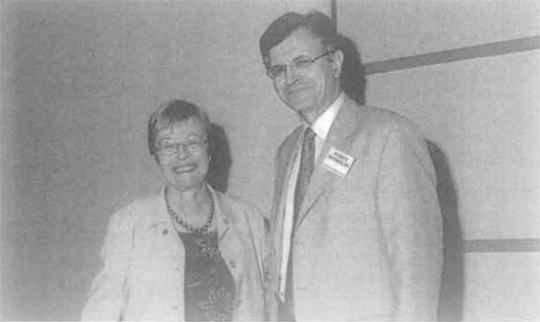
Key note speaker, professor Claudine Herzlich and professor Patrice Bourdelais, both from Paris, at the Oslo conference, (Photo Ø. Larsen)
We cannot talk about bodies, illness and health without relating them to the public domain too. The history of health is also a history of states and cities, of work, of wars and travels. Historians and sociologists have, for a long time now, been analyzing care-giving institutions and health policies, tracing the evolution of epidemics and describing major phases in «collective health». Most of us thought we were explaining an irreversible trend. As the welfare state took shape, health would turn into a political issue; and the «sick man» vanishes under the scrutiny of science. As a consequence, for a long time, we neglected looking at health and illness as private, personal experiences.
Since then, however, many studies have focused on this private aspect and examined «first-person» narratives by the ill or persons close to them, but as often happens, research is following a trend in society. Individuals’ experiences of health and illness are not being reported in scientific journals alone. Patients are raising their voices and using their experiences as arguments to be taken into account when drafting health policies. I would like to analyze how have our academic disciplines become interested in the private and personal experience of health and illness and have dealt with its presence, or absence, of the public space.
The case of sociology is exemplary. With the growing awareness of an unprecedented expansion of medicine, sociologists started working in the field of health during the decades following WW II. The so-called «biomedical model» had acquired an incontrovertible legitimacy for explaining and treating illness conditions. By raising questions about this, Talcott Parsons (1951) inquired into the social meanings of health and investigated medicine’s role not just as a set of techniques but also as a means of social control and regulation. In his wake, sociologists did not analyze health and illness as private or public realities but, instead, considered them to be phenomena defined by «professionals» and left up to medicine and doctors. During a first phase in this new field of research, sociologists mainly looked at illness as a «social role» and at patients as consumers of health care who follow doctors’ prescriptions.
Then during the 1970s, a more critical view arose. Social scientists criticized the increasing «medicalisation» and «social control» that medicine was exercising over bodies. Behind medicine stood the state, imposing its normative goals on people and their health. In line with Michel Foucault’s ideas, Armstrong (1995) decried the advent of a «surveillance medicine», which was reshaping not just the illness experience and the attention paid to bodies but also senses of identity. During the first years when this critical view of medicine and the state was taking shape, sociologists mainly mentioned private individual experiences in order to accuse and lament that medicine was keeping us from hearing an authentic «patient’s voice».
The critical spirit of the 1970s permeated all spheres of social activities. The women’s movement took shape around demands concerning the body and the refusal of its «medicalisation». The «patient’s voice» thus became audible in society and became a subject of research in the social sciences. These disciplines gradually showed interest in topics such as gender, the body and emotions. Such research drew even more attention toward the private experience of illness. My first study in this field, published in 1973, tried to take into account people’s views about health and illness. My assumption being that what people had to say on these topics could be studied in its own right. Even when they refer to medicine and doctors, we should not see them as «dominated» by an all-powerful medical model. Patients’ «discourses» about health and illness recount personal, private experiences that are, however, «socialized». They shed light on the relations between the individual and his/her group in the specific biographical context of illness.
This growing interest with the personal, the private and the everyday took place in a general trend in the social sciences. Norbert Elias (1978) was among the first to point out that this fascination was linked to the rise of new theoretical stances and the rejection of the major paradigms, like Marxism, that had, till then, explained collective life and the future of societies. Later, François Dubet (1994) wrote that, given its «abandonment of the classical conception of society as an order», sociology now has as its central concern «the social experience», which refers to «the work that each of us performs on ourselves» to be the author of his/her own life. This requirement of work on one’s self is precisely what characterizes the illness experience. By the 1980s, more and more sociological studies, on the basis of qualitative data collected by semi-directive interviews, were focused on the illness experience of lay people.
History was taking a parallel path. Private life was becoming a legitimate subject for historians (Ariès & Duby 1987). Meanwhile, the so long overlooked history of patients has become a stimulating field of research as «ego-documents», in particular the letters patients sent to persons close to them or to doctors, are being discovered and examined.
This evolution in intellectual and ideological positions intersected an evolution in pathology. Ever more attention was being paid to the prevalence of chronic and «degenerative» conditions in modern societies. These long-term illnesses, since they affect all aspects of a patient’s life, required a shift away from a model of health care centered on acute illnesses. As Armstrong (1984) and others have pointed out, doctors themselves had to bring the patient’s life and the «patient’s view» back into their understanding of chronic illness. In this new context, social scientists interested in the private, personal aspect of the illness experience turned to studying chronic illnesses. To a degree, especially in relation with medical circles, they became spokespersons for the chronically ill who had limited visibility in the public sphere and were overlooked by the mass media and neglected by health policy.
This research has made an important contribution to the sociology of health and illness2. It has shed light on everyday life «with and in spite of illness» and shown how illness affects patients’ identities. Unlike in an acute illness, which but temporarily interrupts daily life, sociologists have detected in the private experiences of the chronically ill evidence of an irreversible destabilization: the unforeseeable succession of «good» and «bad days» (Charmaz 1991), the long-term disruption of daily routines, and the need to reexamine the usual behaviors, «tacit assumptions» and empirical knowledge that underlie the individual’s existence as well as his/her life in the family and at work. By studying these various disruptions, we have undertaken an in-depth investigation of the «everyday social order», of how fragile it is in relation to biological factors and how difficult it is to reorganize everyday life. In this way, long overlooked «bodily facts» have found a place in the social sciences.
The analysis of the meanings given to the illness experience by the persons who have to cope with it has clearly shown how important the body is to a sense of identity. Researchers have listed the changes in self-esteem brought by chronic illness: feelings of shame related to the body’s deteriorating state, the «stigma» felt in encounter with others, and the patient’s sense of a «loss of self». For Michael Bury (1982), a long-time illness implies «a fundamental re-thinking of the person’s biography and self concept». Thanks to his concept of a «biographical disruption», the accent shifted toward the illness experience’s temporal dimension and the «reflexive» work performed by patients who seek, not always successfully, to regain control over their lives.
After having seen their positive contributions, let us take a critical look at these studies. First of all, it should be pointed out that sociology has explored but a part of the possible range of illness careers. And, as Lindsay Prior (2003) has recently noted, the acute illness experience, especially during critical phases, has gone unnoticed. We have also neglected the experiences of epidemic, infectious and parasitic diseases in Third World countries. Furthermore, few studies have examined other bodily events, and then only of women’s experiences (menstruation, abortion and breast -feeding). Secondly, despite the increasing importance given to health in contemporary societies, and despite the heavier emphasis placed on «lifestyles» that is transferring the responsibility for health from the public to the private domain, sociologists have conducted few studies on bodily wellbeing and fitness. They have studied health perceptions and behaviors, not health experiences from the personal viewpoint of the concerned. This «emic» study of health would be important both in itself and for an understanding of illness. For example, we might suppose that the ever tighter linkage between health and self-esteem worsens the sense of a «loss of self» felt by the chronically ill.
Thirdly, as Janine Pierret (2003:14–15) has noted in her recent review of this field, research on the illness experience has barely inquired into the macro-social context and has not sufficiently analyzed the relations between private, everyday experiences and the structural factors affecting them. To cite just an example, the stigma felt by the ill or disabled and, too, the recognition of their rights both provide evidence about a society’s policy options and about social bonds in that society. Health and welfare policies, as well as the funding of the health-care system and social security systems, are crucial not only to patients’ medical prospects and their access to health and medical services, but also to their lives and everyday experiences. But these relationships have certainly not been analyzed in depth in our studies.
By the 1990s, researchers were focusing on a new subject, namely firstperson illness narratives. Once again, sociologists of illness were swept up in a current running through the social sciences, a current of interest in narrativity. The history of literature has a tradition of diaries, letters, personal accounts and novels centered on illness. Nowadays, such narratives, whether spontaneous or produced in the framework of sociological research, increasingly fascinate sociologists studying illness. Every issue of journals in this field now contains one or more articles on this theme; and the notion of narration has become a key concept (Hyden 1997).
There is no denying that many of the scientific studies of these narratives are both interesting and moving. The personal viewpoints thus expressed are a far cry from the descriptions and conceptions of biomedicine. And we notice how emotionally close social scientists frequently have been to the patients whose narratives they have analyzed. Nonetheless, I sometimes feel uncomfortable with the stance adopted by these authors. First of all, narration is not neutral; it is always destined for someone and pursues an underlying goal. But sociologists have sometimes accepted narratives «at face value» and too easily assumed that they convey an image «truer» than what any other method of inquiry could produce. The key role assigned to narration as a discursive process has also, despite references to the body and to suffering, tended to «de realize» the illness experience: in these studies, illness becomes a «text» with a meaning but without any reality or material import.
For some researchers, the major quality of these narratives is their moral dimension, since illness is a «moral occasion» (Frank 1997) that crystallizes «vital lessons about living» (Charmaz 1991). This perspective on illness is the diametrical opposite of the vision emerging from studies of the chronically ill coping with everyday life. The personal experience of illness is no longer a «biographical disruption»; it no longer entails a «loss of self». Instead, it is a self-discovery, it offers a possibility of renewal and change, or the opportunity for proving one’s capacity to «rise to the occasion» and «be successfully ill». The patient is thus presented as a major figure in our contemporary individualistic culture. No one can deny that illness, like any other important life-event, is a «moral experience» that can have positive aspects. In fact, this idea fits in a long tradition of religious interpretations of illness. But can all illnesses be «successful»? Does this model of personal salvation through illness not put intense pressure on patients who feel unable to «succeed» in that way?
Moreover, how can we make these rather discordant images of the patient’s private, personal experience compatible with each other? If sociological research is to advance, it must start taking this diversity into account and explaining it. It must, above all, become more reflexive and critical of its own methods and actions. How do methods of data collection, the context of research and the implication of the sociologist whether as spokesperson or witness, influence patients’ narratives and, more generally, the kind of data we are able to collect?
Nevertheless, these various currents of research share common points. Both of them have certainly helped to bring visibility to the private experience of illness, by emphasizing its individual and subjective dimension in isolation from the social context and the domain of collective public life. Undoubtedly, these analyses have reflected a common conception of modern chronic illnesses: as «totally turned inward the individual (…) and not discernible in the public space» (Herzlich, Pierret 1987). But they failed to recognize that the private is not isolated from the public and the collective, and is not severed from socio-historical trends. However, the breakout AIDS came to provide another frame of interpretation for illness, its experience and narratives. Given its epidemic character and that it initially spread in certain groups, AIDS soon became a public, collective phenomenon.
The narratives produced by the HIV-positive ranged, from the very start, well beyond the individual, subjective domain. These persons declared they were talking not in their own name alone but also for the sake of other patients and of the groups where the epidemic was hitting hardest. These narratives thus amounted to testimonies with several objectives. They expressed a sense of identity, but the self-work entailed by the illness experience referred to the possibility of fitting one’s individual life-trajectory into a group history. The narrators also wanted to change the negative image of the illness and fight against stigmatization. This strategy was effective. At the start of the epidemic, when the public only heard reports that alarmingly tallied the ever increasing number of anonymous victims, the temptation was strong to react with coercion. As of 1985, persons with AIDS were talking about their lives and situation, and were seen on television. The inclination to discriminate against them decreased, and feelings of compassion and solidarity arose in other groups. Bearing testimony in this way was one of the first public manifestations of the activist organizations forming to fight against the epidemic. Thanks to all this, patients’ private experiences were widely diffused through the media toward the public; and personal narrations were part of the effort to stimulate collective action. The AIDS illness experience thus became a public issue.
This set off a trend reaching far beyond AIDS. Ever more often for various sorts of health problems, a new kind of patients appeared in the public space. Patients’ associations about various other illnesses make them heard and their voices have a per formative impact. Their narratives are not just testimonies. They might take the form: of complaints as in lawsuits; and often, of warnings as in recent «health crises» (such as mad cow disease or asbestosis); or even of accusations against political authorities and economic interests. In all these cases, groups form that effectively rally people on the basis of a personal experience.
Researchers who studied the AIDS epidemic (including myself) were fascinated by this sudden emergence of the illness experience in the public domain. The considerable sociological research devoted to AIDS has clearly shown how the private and public domains of life overlap and how intimacy becomes collective and political. As social scientists, we did not assume the role of spokesman for patients, since the latter have managed on their own to make themselves heard. Instead, we became their allies. We were attracted by this new figure of the patient on the social scene and especially by the solidarity and activism of persons with AIDS and their organizations. Suddenly, Parsons’ idea that the ill are denied the possibility of forming a group seemed definitively outdated. On the contrary, patients now seemed to serve as the best example of contemporary collective action and activism. We assumed we were observing a «change of paradigm»: the advent of patients’ power and a radical transformation in our societies’ relation with health, medicine and science. Health was becoming a key issue, a news topic (Herzlich, Pierret 1988), drawing the attention of the media and politicians. Through activists in organizations, «civil society» was forcing its way into hospitals and laboratories. The relations these activists established with medicine and science were both critical and participatory. The «patient’s viewpoint» was being used to create new civil rights.
But the AIDS epidemic is now 20 years old. How should we appraise the evolution and take stock of the current situation? It is time to ask the question: has AIDS deeply changed the relations between the public and private in the field of health? Has it irreversibly changed people’s relations with medicine? In poor countries, AIDS is now a huge pandemic menacing not just lives but also economic development and social cohesion. The voices of patients there are barely audible. In wealthy countries, mobilization around AIDS has, since treatments have become efficacious, fallen off. The patient no longer holds centre stage. Nowadays, many patients are, again, left in the solitude of their individual experience.
Did social scientists overestimate changes during the past two decades? Did we fail to recognize that social change is never homogenous nor linear? Did we too easily come to believe that they would extend into all fields of health? Should we have paid more attention to other evidence – for example, to some studies showing that most persons with AIDS did not belong to an organization and did not even have contacts with each other? Or the evidence that, in the case of other illnesses, few changes have occurred in the relations with medicine and in the illness experience? In some domains, patients’ associations are still hardly visible, rather powerless and they struggle for their existence. Sociologists should be well aware of these neglected realities. For us, the challenge is to analyze this new phase and then reexamine the picture I drew earlier.
Bibliography
Ariès, P. & Duby, G., 1987. Histoire de la vie privée, Paris: Seuil.
Armstrong, D., 1984. «The patient’s view», Social science and medicine, 18(9), pp.737–744.
Armstrong, D., 1995. «The rise of surveillance medicine», Sociology of health and illness, 17(3), pp.393–440.
Augé, M., 1984. «Ordre biologique, ordre social: la maladie forme élémentaire de l’événement» in: M. Augé & C. Herzlich (eds.), Le sens du mal. Anthropologie, histoire, sociologie de la maladie, Paris: Éditions des Archives Contemporaines, pp.35–91.
Bury, M., 1982. «Chronic illness as biographical disruption, Sociology of health and illness, 4(2), pp.167–182.
Charmaz, K., 1991. Good, days, bad days: The self in chronic illness and time, New Brunswick, NJ: Rutgers University Press.
Dubet, F., 1994. Sociologie de l’experience, Paris: Seuil.
Élias, N., 1978. «Zum Begriff des Alltags» [On the concept of daily life]’ Kölner Zeitsclrift für Soziologie und Sozialpsychologie, 20, pp.22–29.
Frank, A.W., 1997. «Illness as moral occasion: Restoring agency to ill people», Health, 1 (2), pp.131–148.
Herzlich, C., 1973. Health and illness, a social psychological analysis, London: Academic Press.
Herzlich. C, Pierret J, 1987. Illness and Self in Society, Baltimore, The Johns Hopkjns University Press.
Herzlich. C, Pierret J. 1988 «Une maladie dans l’espace public: le sida dans six quotidiens français», Annales Économies, Sociétés, Civilisations, (5), pp. 1109–1134.
Hyden, L.C., 1997. «Illness and narrative», Sociology of health and illness, 19 (1), pp.48–69.
Nieberk, A.A. van, 2002. «Moral and social implications of AIDS in Africa», Journal of medicine and philosophy, 27(2), pp.143–161.
Parsons, T., 1951. «Social structure and dynamic process: The case of modern medical practice», chapiter 10 in The social system, Glencoe, IL: Free Press.
Pierret, J., 2003. «The illness experience: State of knowledge and perspectives for research», Sociology of health and illness, silver anniversary issue, pp.4–22.* The special anniversary issue of Sociology of health and illness carries an interesting review of research in this field by Janine Pierret (2003). This British journal alone has run dozens of articles on the illness experience – not to count the articles in other journals or in books.
Prior. L., 2003. «Belief, knowledge and expertise: The emergence of the lay expert in medical sociology», Sociology of health and illness, silver anniversary issue, pp.41–57.
For: Health between the private and the public: Shifting approaches, Sixth EAHMH Conference. Oslo, 3–7 September 2003
Article translated from French by Noal Mellott (CNRS, Paris, France)
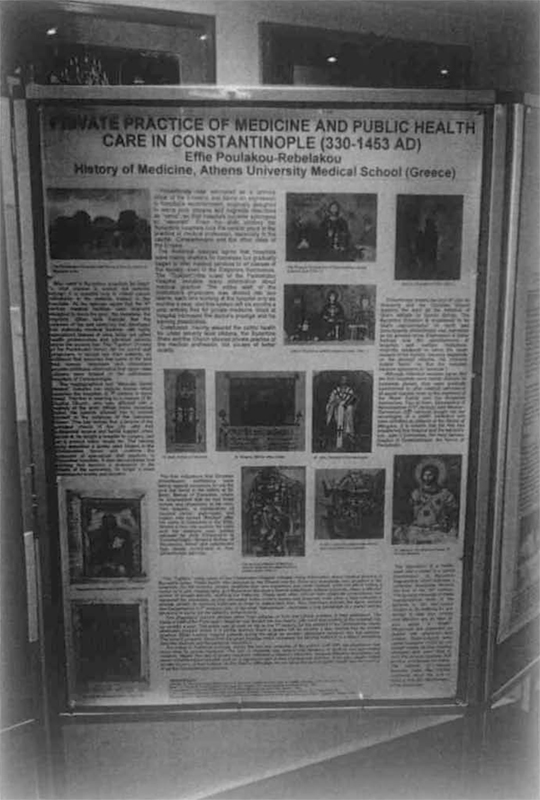
A choice of poster presentation was available. (Photo Ø. Larsen)
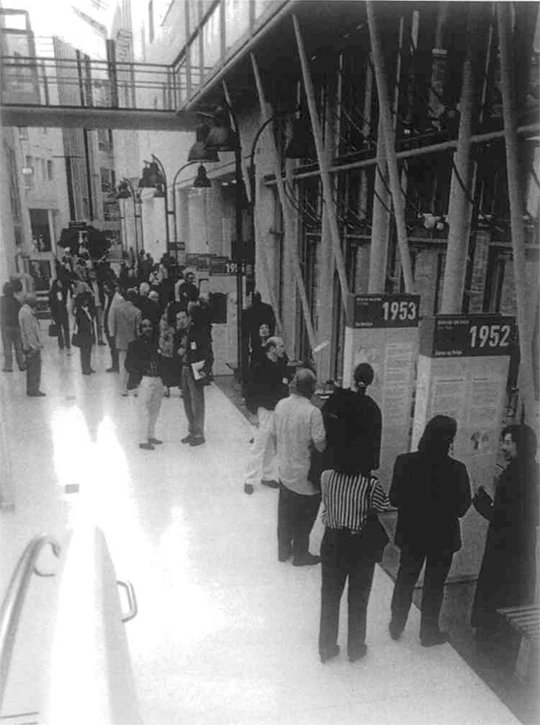
Visit to the medical exhibition Stories about health, which had been arranged by the Foundation National Medical Museum in the main hall of the National Hospital (Rikshospitalet) in Oslo. (Photo Ø. Larsen)
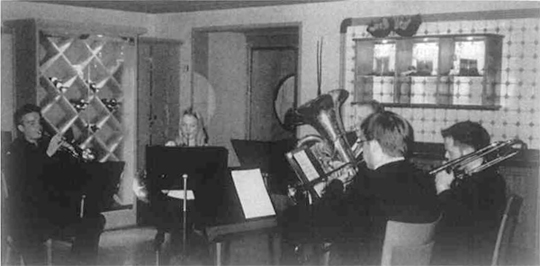
Brass concert at the dinner on September 5th, 2003. (Photo I.F.Larsen)
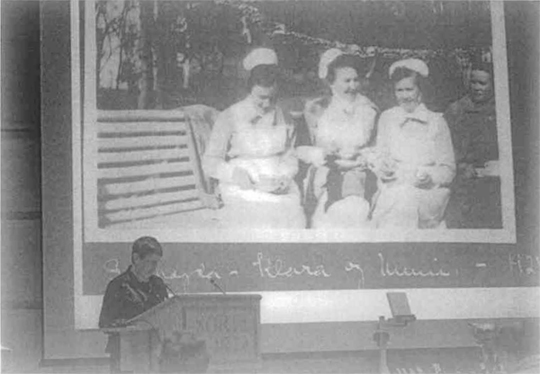
Jorunn Mathisen (Norway) presenting a nursing history project. (Photo Ø. Larsen)
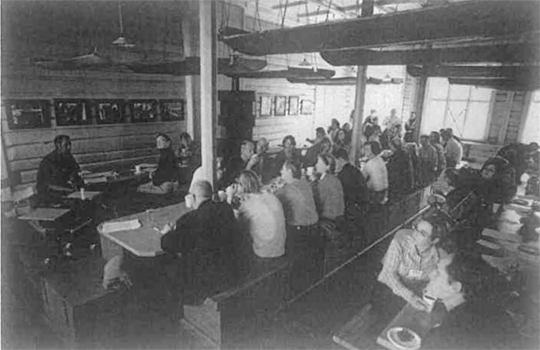
The traditional «outing» of the EAHMH conferences went this time to the old silver mining city of Kongsberg and included a visit to tunnels, galleries and shafts carved out kilometers into the rock centuries ago, making the participants acquainted with the abundance of accident and health risks facing the workers in the past. In the old dormitory of the miners, the audience attended The Kongsberg lecture, which presented a recently discovered archive material on the patients treated by the surgeon of the mining company in the year 1739. This study has been published in Norwegian, containing the Kongsberg lecture (in English) as a summary, in the book Berg BI, Braaten M, Larsen Ø. Yrkesskader ved Kongsberg Sølvverk. Bergkirurgens skadejournal 1739. Kongsberg: Bergverksmuseet, Skrift nr. 26, 2004. ISBN 82–91337–30–6. 118 pp. (Photo Ø. Larsen)
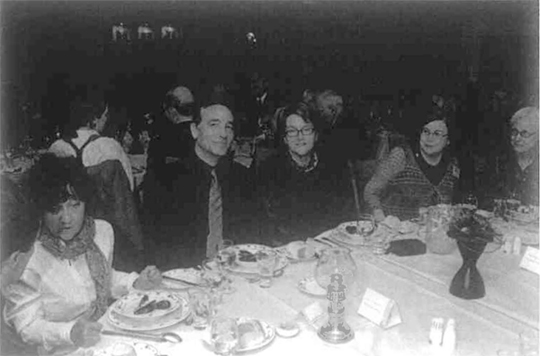
Official farewell dinner on September 6th, 2003: From the left professor Armelle Debru (Paris), professor Esteban Rodrigues-Ocaña (Granada), dr. Ingegerd Frøyshov Larsen (Oslo), professor Marie Clark Nelson (Linköping) and professor Marijke Gijswijt-Hoofstra (Amsterdam). (Photo Ø. Larsen)
CERMES (CNRS-INSERM-EHESS)
7 rue Guy Moquet
94801 Villejuif Cedex. France
33 1 4958 3566
herzlich@vjf.cnrs.fr
